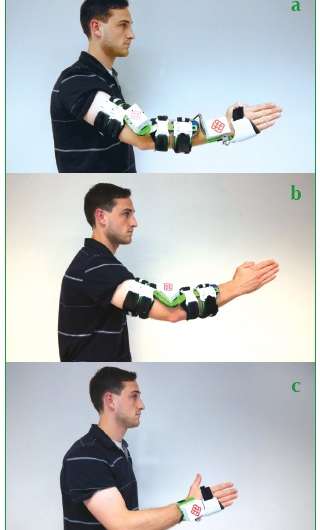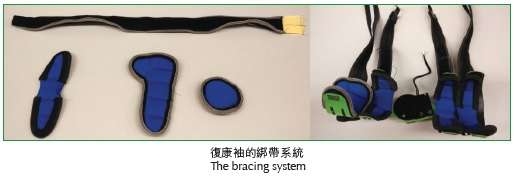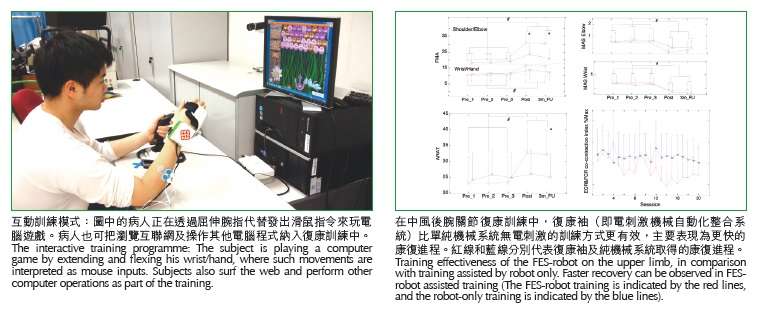Modules of the rehabilitation sleeve can be worn together or separately:a ) the elbow and wrist /hand modules on the upper limb; b) the elbow module; c) the wrist/hand module. Credit: Hong Kong PolyU
A wearable FES-robot hybrid training system has been designed for multi-joint upper limb rehabilitation. With successful combination of the two technologies' advantages, recovery achieved by the hybrid system was more prominent than using either technology alone in pilot clinical trials.
The training device contains a novel bracing system with the function of moisture and pressure management to improve the wearing comfort of the device for long-term usage. The device can also translate the user's motions into mouse inputs and interact with computers. When coupled with various computer applications, it can diversify rehabilitation training programmes and enhance the patients' interest in the process, thus yielding better results.
Special Features and Advantages:
- Faster recovery: Not only can the FES-robot hybrid training system assist the elbow and wrist joints to move using electric motors, but can also enhance neuroplasticity recovery by inducing additional muscular practice at the elbow, wrist and hand/fingers through electrical stimulation.
- Comfortable wearing: The bracing system manages the pressure and moisture levels of the skin during training.
- Interesting training programme: The training system can act as a computer input device, enabling the combination of training tasks with interactive computer games and applications.
Modules of the rehabilitation sleeve can be worn together or separately:a ) the elbow and wrist /hand modules on the upper limb; b) the elbow module; c) the wrist/hand module. Credit: Hong Kong PolyU
Applications:
- The device provides a novel training method for paralyzed persons to improve their upper limb functions.
- The device can be used in hospitals, clinics, health centres and at home.
Modules of the rehabilitation sleeve can be worn together or separately:a ) the elbow and wrist /hand modules on the upper limb; b) the elbow module; c) the wrist/hand module. Credit: Hong Kong PolyU
Provided by Hong Kong Polytechnic University
























